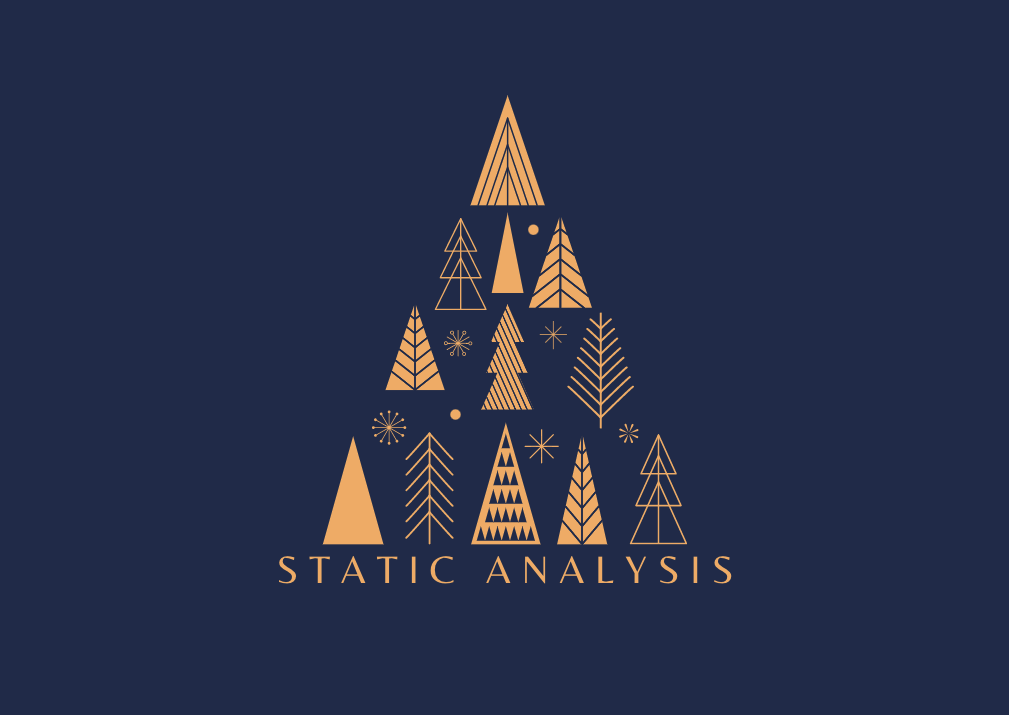01 - Intro

Differences between static analysis and (dynamic) testing?
My Answer:
- Static Analysis: Before compling the program, the analysis tool will detect whether the program is suitable to compile.
- Dynamic Analysis: detect program whether true while compling?
Exact Answer:
Static Analysis: 运行程序 P 前,静态分析会 analyze P to reason about its behaviors 和判断 P 是否满足一些 properties:
- Does P contain any private information leaks
- Does P dereference any null pointers
- Whether cast is safe
- Can v1 and v2 in P point to the same memory location
- Will certain assert statement in P fail
- Is this piece of code in P dead ?
Dynamic analysis is the testing and evaluation of a program by executing data in real-time.
JVM - 会在真实或虚拟处理器上执行程序来执行对软件的分析
Other notes:
Rice Theorem: no approach to determine whether P satisfies such non-trivial properties.
non-trivial: 能理解为一些 与程序运行时有关的性质(i.e. 信息泄漏),因此莱斯定理可以理解为:不可能存在一个方法能给出 non-trivial properties 的 exact answers.
“Any non-trivial property of the behavior of programs in a r.e. language is undecidable.”
r.e.(recursive emunerable): 递归可枚举的语言 - 指能被 Turing-machine 识别的语言,现代高级语言都是 r.e. 的
Understand soundness, completeness, false negatives, and false positives
My Answer:
Posix: 程序 P 中只有 10 个分析异常的行为 - 即 Truth = 10
- Soundness: 比 Truth 范围大,Soundness 性质会分析出 P 内可能有 12 个错误
- completeness: 比 Truth 范围小,但分析出来的一定是对的,只是会少于 10 个错误
- False negatives: Negatives 指 Soundness 范围缩小达到 Truth,但可能缩减太厉害,此时分析出的异常少于 10 个,漏报异常,即应该是 Truth 的却分析成了 negatives 而没报出。
- False positives: Positives 扩大 completeness 范围,有可能分析出不在 Truth 范围的异常,即不属于 P 程序的异常,为异常误报
Exact Answer:

Why soundness is usually required by static analysis?
My Answer:
- 因为达到 perfect 是没什么可能的,宁愿多提醒这块代码可能有异常,也不要为了 completeness 而少提醒
Exact Answer
- Unsound: “Safe cast” -> wrong
- Sound: “Not safe cast” - correct

如上方有两条 flows,如果只看 B->A,会认为是 Safe,这样不 Sound 会得出一个错的结论
Abstraction and over-approximation?
My Answer:
- Abstraction: 将程序变量的 OP 作为抽象符号,静态分析时根据抽象符号来判断
- Over-approximation: 过于 Sound,可以理解为 Compromise completeness
Exact Answer: (我的答案描述很不全啊)
- Abstration: Determine the sign(+, -, or 0) of all the variables of a given program.

Over-approximation: Produces false positives, while is taken for granted in most static analyses.
更 Sound 意味着能更安全些





